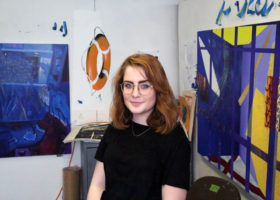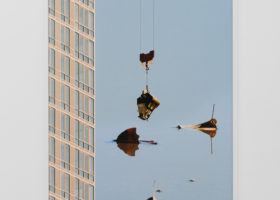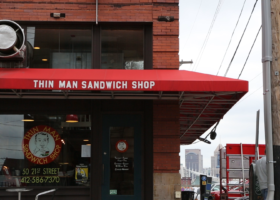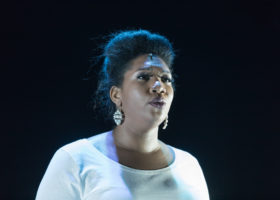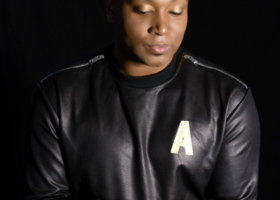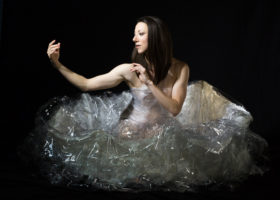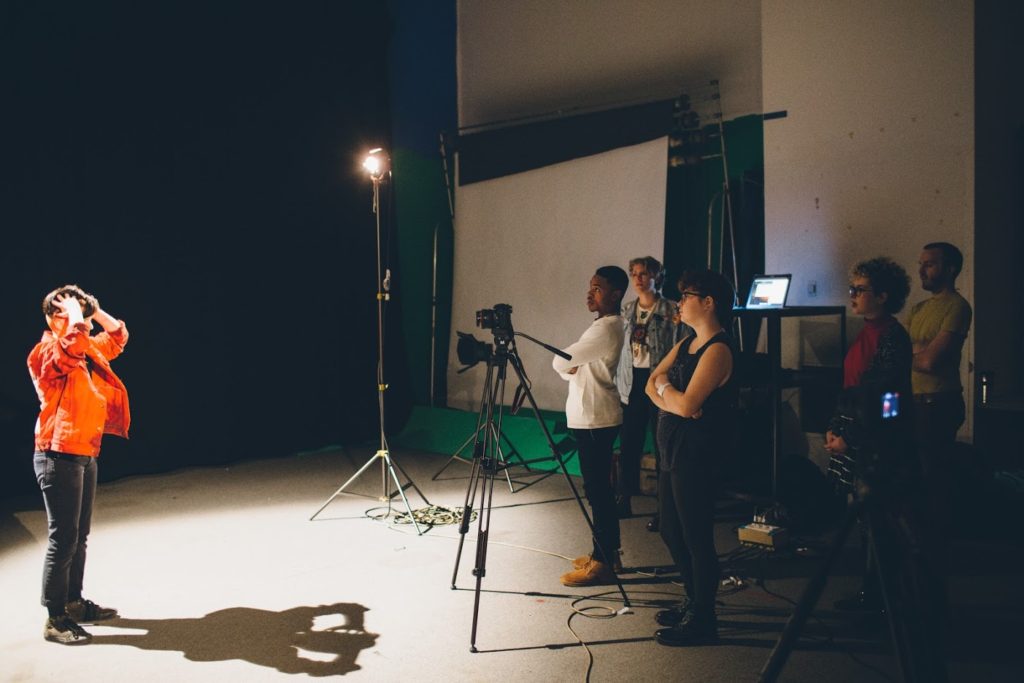
Dreams of Hope is an educational arts organization that provides the region’s lesbian, gay, bisexual, trans, queer, and allied (LGBTQA) youth “a welcoming environment to grow in confidence, express themselves, and develop as leaders.” We sat down with program director Adil Mansoor, music director Judith Avers, and youth advisory board member and musician Jacob Harrison to discuss their recent work—and we are happy to be premiering the video of their original song “Home.” Watch it below, and then read our interview with Dreams of Hope.
![]()
David Bernabo: Can you talk about how each of you became involved with Dreams of Hope?
Adil Mansoor: Susan Haugh founded [Dreams of Hope] thirteen years ago. I moved to Pittsburgh six years ago, but at the place I was working in Chicago, there was a person who worked there whose ex-boyfriend was on the board of Dreams of Hope. He was like, “There’s this LGBTQA+ organization that works with arts—are you interested?” and I was like, “Yeah! That sounds like everything I care about.” So I met with Susan the first week I was in town, and here I am.
Judith Avers: I think I got an email from a neighbor up the street—we call it our “gayborhood” though I should call it our “LGBTQA+ neighborhood,” but there’s a bunch of retired lesbian women so they call it the “gayborhood.” They sent me an email saying that there was a camp director position [opening at Dreams of Hope]. I had been teaching at a summer empowerment camp in West Virginia, but [this] was definitely more my speed. Then I started working with Adil in theatriQ, and now it’s transitioned to where I mostly do music now.
Jacob Harris: When I was still in Pittsburgh Public Schools, one of my friends was talking about all the different shows that they had, saying, “Oh my gosh, Jordan, you have to do this!” Then I went the next year and auditioned. I didn’t even get my audition stuff done until the night before, but it was extremely accepting and I was able to figure myself out. It was really cool because the entire time I was there I was hearing about how Dreams of Hope has grown and it just seems like it’s been that big since day one because of how everyone works together. It’s just really beautiful.
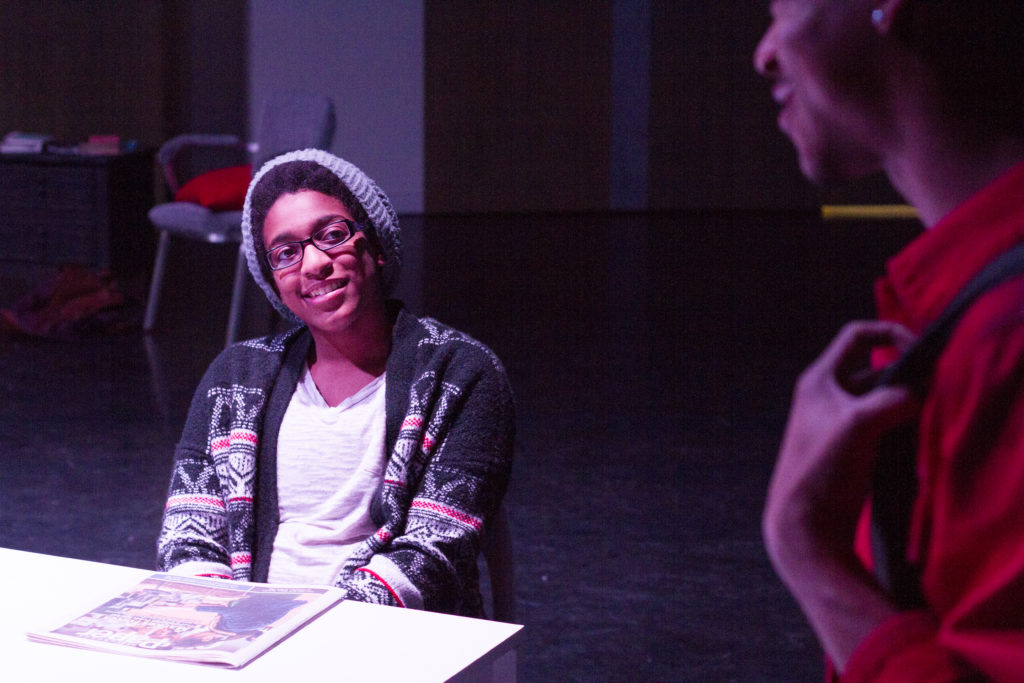
DB: Stop me if I get too technical, but I’m really curious about the songwriting process. Was it collaborative? What was the approach to recording the music?
JA: For “Home,” we gave everyone little cards that we wanted them to use to describe what home is to them in one word. And then on the other side to write what home isn’t. Every person in theatriQ wrote and contributed, but the music group laid them out on the floor. We came up with a guitar part and everyone took turns trying to write to that guitar part and then as soon as we had one sentence, all of us would add to that. It’s was a really neat experience. That was an emotional day.
DB: Because of the content or just the experience?
JA: Yeah, when you hear the part Red came up with—the first few lines Red wrote, he’s looking at all the words and putting them together off the top of his head and it was, “All I want is to be wanted / all I want is to feel safe / I never felt the warmth of support / never was in a place that wasn’t forced.” We didn’t edit that. All of us were just like, “Oh, that’s it!” We had another student talking about their experience with homelessness and living in shelters and getting by, and that was a student who hadn’t opened up that way. And then we sort of understood the magnitude of the song.
JH: When I first joined DOH [Dreams of Hope], I wasn’t originally part of theatriQ. And then eventually I went into the music room, watching and listening and joining in on how they [made music]. Basically, it’s sitting around in a room with a bunch of people that you really connect with, strumming along to a tune and brainstorming a bunch of random ideas and random lines and seeing how they go together. It’s really cool to see how it all ends up together in the end. When you’re starting out it’s like, I’m gonna say this random line, and then everybody’s like “Hey, that was actually pretty cool.” It turns out to be this really insane, crazy-involved and connected piece at the very end ,and everybody is just like, “Oh my gosh, we spent so much time on this piece, it’s amazing how it turned out. and I can’t believe how it started.”
DB: Can you talk about the recording process?
JH: Can I just say how much fun that was? Whenever we went, I met with Judith and with everyone from the music ensemble and we went to—
JA: Broadcast Lane Studios for part of the recording.
JH: When we went there, it wasn’t anything like I expected: It was just an apartment with so much recording equipment and musical instruments and soundboards. And most of it was singing into the microphones, Judith on her guitar in a soundproof room, and tweaking around what it all sounded like to make sure it was what we wanted. We were all singing live into the mic, and everyone was joking around, having fun. It wasn’t at all tense.
DB: Nice. Was the recording done in layers? Like multi-tracks?
JA: We had a very tiny budget for this CD, so we chose to take the teens to Broadcast Lane Studios because it’s in Homestead and my friend there gave us a really good discount for just a few hours. So everything was mostly done live.
DB: Even the harmonies?
JA: All at once. We wanted to capture the heart of the “Home” song, and that was the priority of going to the studio because we knew it was going to be in the video. And then, while we were there, we did a couple of other songs for fun. We recorded the other half [of the EP] with my simple equipment in the stairwell at the Alloy Studios and that was really lovely because you can hear the car sounds and the trucks. Those are some of my favorite tracks because everyone was so relaxed.
DB: Did one person arrange the harmonies, or did everyone pick their own?
JH: I didn’t really know how to harmonize when I first joined DOH, and so I was basically singing whatever came to mind. Some people there, like Greg Buchanan, knew how to harmonize already. I think they just chose something they thought would work well and just went along with it.
JA: But I also think it’s important to develop an ear, which I didn’t, so maybe I’m in the same boat as you. I always would sing the main part, and I’ve learned a lot by letting people figure out what doesn’t sound good. We sing it and someone might say, “Something’s funny” and then, “Well, what is it?” Then we all slowly figure out what it is and change it, as opposed to, like, “Here are the harmonies, Jacob.” Because if you listen closely, you can pick out Jacob’s voice: It’s this natural, low, very cool, interesting harmony. [Harmonizing] sort of feels a little chaotic at the time, like, let’s hope that this works out….
DB: Yeah, I press a note on the keyboard and match it, and then I sing a couple words. And then I stop and I do the next note… for recording. If you asked me to do it live, it’d be a complete disaster.
Judith: Gray has grown up singing harmonies since birth, pretty much. Gray is one of the harmonizers [for whom] I can write a really simple harmony that, I guess, is in thirds. I don’t know what that means because I’m not formally trained, but Gray will be like “oh yeah, you could do thirds, but what if you go to the fifth and the fourth and the seventh” and pushes all of us sometimes to make it a little more interesting.
DB: What are some of the themes on the EP?
JA: I appreciate that the EP is varied and I like that there are love songs—some sweet, queer love songs—and a lot and songs with different messages about our community. But I especially feel like “Home” is pretty relevant right now [in our] political climate. “Home” has so much to do with safe spaces and feeling safe where you are. My personal hope is that the song opens a few hearts in our community and hopefully the entire world. Because the video focuses so much on school spaces, I hope it chisels away at some old ideas and plants some seeds.
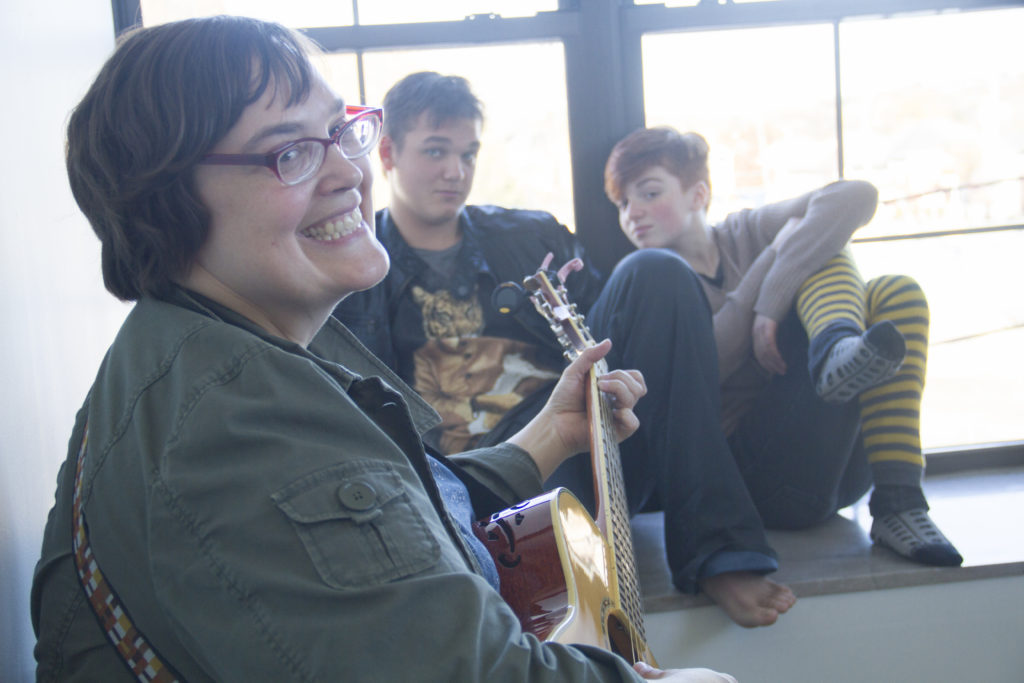
DB: So for the video, is everything done collaboratively or is it part mentor training?
JH: [Filmmaker and playwright] Paul Kruse works around that equipment a lot and knows what to do with the camera, design, and effects. The advisory board got together and brainstormed a million concept ideas after watching a bunch of random music videos. And then once we were done, we voted on them. Then we went to Pittsburgh Filmmakers because they let us have a couple rooms to help film. Paul mostly went around and helped people, but at the same time he was teaching us how to work the cameras. We were acting like a bunch of directors. It was really, really cool, because I’m a tech nerd, and I love doing anything like that. It was a lot of collaborative work and a lot of ideas from different minds and different people and different youth, and it was amazing how it turned out.
DB: I think it succeeds: I mean, the video really works with the song and the song with the video.
JH: Yay!
DB: Is the primary focus of the video to extend funding for DOH, or does the project support other aspects of DOH’s mission?
AM: One of the goals is pushing our artistic integrity and our artistic excellence to keep growing in what we’re able to do. Even as teaching artists, [we throw] ourselves in totally new situations because it keeps us totally engaged and thrilled, which just makes the youth teacher work so much more exciting and engaging. If there are any job qualifications at DOH, it’s that you’re a risk-taking artist. Otherwise, it doesn’t work. Judith, over the last two years—I mean, the music is out of this world. And we watched the excellence of the music really skyrocket really fast. Once that was clear, it was obvious we had to figure out a way to support that and bring visibility to it and honor it and celebrate it at the level [of quality] it was reaching. So we started to brainstorm. What are all of the different ways we can honor the work? And I think—it must’ve been your idea [He turns to Judith and laughs]
JA: I think so. Maybe it was Paul’s. Paul always has really good ideas. Or yours, or one of the teams’.
AM: Traditionally our show [a play, performed by the theatriQ youths] ends sometime in the fall/winter, and then we have this whole spring semester—we decided that this spring we’re going to enter into the world of media. So really the goal was to honor the art and to embrace the skills that were sitting in our room. Once we had these incredible songs, we’re like, “Oh! This is clearly becoming an EP. There’s so much work here.” And then we got this awesome grant from the Sprout fund to have a leadership group, and we wanted it to be led by the teens, but we had seedlings of project ideas, and it was up to them what they wanted to do. The teens were very focused on the music video, with the goal of visibility. We want national visibility for these conversations. We want everyone to know what teens are talking about. As all that has been happening, we also recognize that this is potential to help DOH grow. The interest in the programs has been growing at a rapid rate. We went from serving about 30 young people a year to 1,000 in about three years.
DB: Wow!
AM: Now, we’re not serving all 1,000 every week. Many young people meet in four-session workshops in a school. Our camp program went from eight young people to 50, plus a waiting list. Like, really fast. And the funding hasn’t been able to keep up, which makes sense. I mean, nothing grows that fast. So this is an attempt for us to make it so that our funding could possibly keep up. We’re going to attempt a crowdsourcing fundraiser. We’re hoping that this brings some national visibility, and my ultimate dream, if I’m gonna dream big, is for a queer youth arts center in Pittsburgh.
DB: Have you had multi-year commitments from any of the foundations? I mean it seems like it would be great if someone gave you five years of funding.
AM: Yes, there have been multiple year grants, none that were five years. That would be lush.
JA: Let it be known, we would like that.
AM: Our main challenge is that we’re growing so fast. But at the same time, the support has been there and there’s interest from the folks who want to support programs. Another challenge is our staff capacity. We have three people working full-time doing every corner of this work. And none of us seem to do anything halfway, which maybe would be good sometimes. [She laughs]. But it would be amazing if we had the capacity to hire more support. Another main challenge right now is space. We only get to be in the Alloy Studios—and they’re really generous—but we’re in the Alloy once a week.
If Jacob and Judith want to sit in a room and do music work, and they both have the time and the interest and the passion, but there’s no room to sit in to do it on a Tuesday… Or if we realize we didn’t get far enough in that rehearsal, or there’s a group of teens in January who were like, “I wanna start a visual arts club,” and I was like, “That sounds awesome but when and where?” You know, we have all of this energy and we can only use it for four hours every Sunday. And even setting up meetings or having conversations about jobs in the summer, which we can do together, we just don’t know where. It would be amazing if the young folks could be in the same place where I am also working and we could be consistently collaborating.
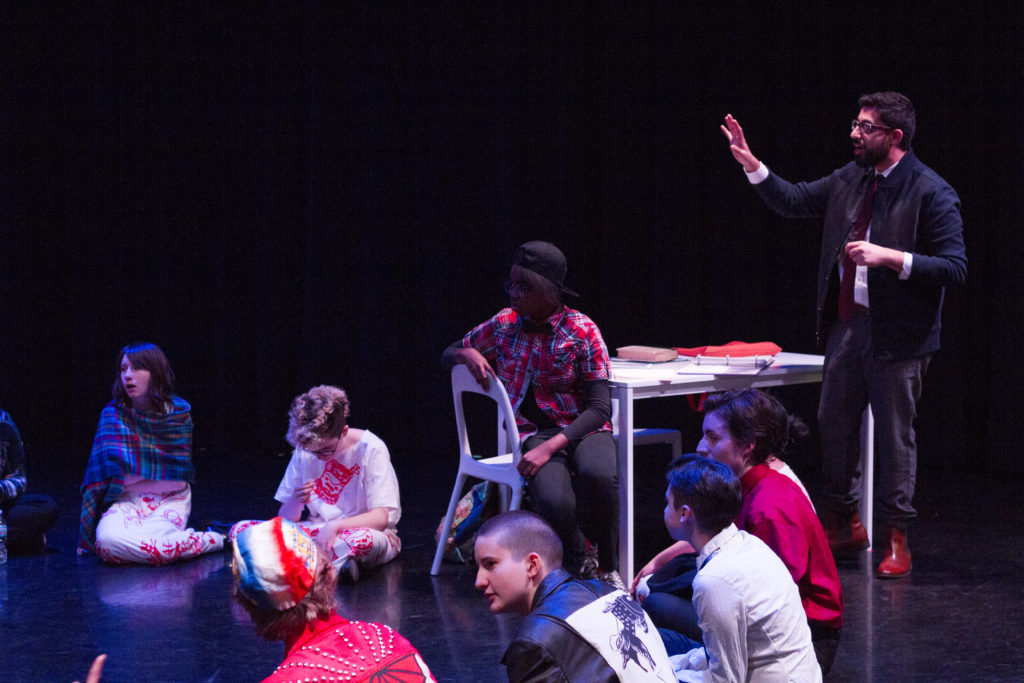
DB: So, tell me about the release plans for the EP.
AM: So, logistics-wise, the music video will be released on Wednesday, June 8th, and we’re really excited. We want Ellen and—
JA: Ellen Degeneres!
AM: And Cyndi Lauper and George Takei and Laverne Cox… Small goals, small goals. So we’re hoping all of these folks will support the video and, I mean, they should.
Then, 48 hours later, on Friday, June 10th, we’ll be at the East Liberty Presbyterian Church having a huge release party and celebration. It’s all ages, from 7-10 pm. The first half will be the performance part where we’ll get to hear the songs from the album and we’ll get to be together in that kind of community. Then in the second half is a selfie station dance party, Love Your Selfie Please. We’re hoping to think about how we can keep creating more spaces for LGBT youth, and we’ve been kind of galvanizing around the hashtag #ImHomeWhen. So if there’s a way for us to think about, “I’m home when my peers are respecting me” or “I’m home when I’m making artwork,” “I’m home especially when I’m making artwork about identity.”
JH: Just being in DOH this year has been one of the most eventful years of my life, and there have been so many different opportunities to help out the LGBTQA+ community and do so many wonderful things for people and make sure that people feel safe and… making sure that they feel like they are being listened to. I think that Dreams is a really amazing organization that people should be able to hear about more, because had I not been in DOH, I would’ve still been struggling with my identity and struggling with how comfortable I am around people and in public. With Dreams, I don’t have to worry about that. I don’t have to worry about who I am or how I need to appear or the stereotypes that I need to keep up with ,and it’s a lot of stress off my back and a lot of comfort knowing that I don’t have to worry about other people judging me. So I just really love this organization and I just really feel like a lot of people need to hear about it. And I’m really glad that we had this interview.
DB: If people did want to be involved in DOH, how could they get in touch with you all?
AM: The best way to stay in touch with DOH is definitely through our Facebook. In terms of working with us as young people, we’ll have auditions in the fall. So that’ll be the next time people can join the ensemble itself. And then to educators and community organizers out there, we are trying our hardest to get into more and more schools and community organizations. So if you’re an English teacher and are ready and excited to have a teacher artist in your classroom talking about LGBT curriculum, call us. Find us on our website dreamsofhope.org. We are very much looking for supporters and folks that you know that have the resources, whether that might be funding, space, or whatever else to keep our mission expanding in Pittsburgh.
